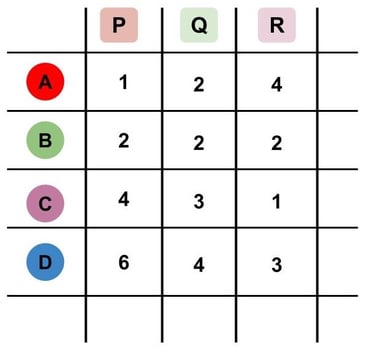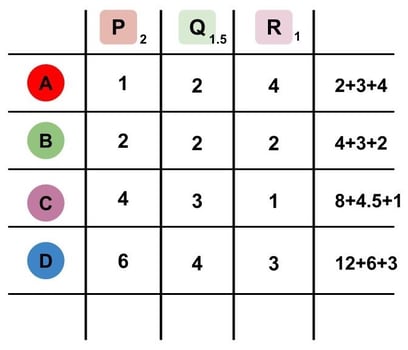Things to ask from an app development agency
The digital world has seen the maximum growth in the demand for mobile phones mainly smartphones. People have started relying on the data available...
3 min read
Anurag : May 12, 2017 12:00:00 AM


Developing a successful mobile app/service is not an easy task - it requires careful preparation, planning and implementation. And one important part of mobile app development is defining the features that your app will provide. As an app provider, ideally, you would like your app to have all the features that pertain to the genre. But that also means a higher time to market, a more complex app and losing the first-mover advantage. This is why it is very important to prioritize which features you should work on first in the app and which ones can come later.
The process of identifying the mobile app features to implement first is usually dependent on the personas of your product. A persona is defined as the key user segment of your product. Don’t confuse personas with consumer segments though - personas are derived by delving much deeper into the requirements. They are pivotal in shaping the features of your product, making it more useful and relevant for your end users.
There are many tools available which help you identify your personas - it is not limited to a defined process and each product may have its own specifications. However, one thing is for sure - when you go through all the possible personas for your product, with the rising number of personas for your app, it becomes increasingly difficult to figure out how new features should be fit in without having to neglect some.
On first glance, identifying the key user personas for your app might seem easy. But as you get into the details, it might not be that easy. There are tools available which can help you in identifying these.
Let’s say we take the example of an app for a personal trainer to connect with their clients. You might think that the personas would include the clients. But if you dive deeper into it, there would be three personas
Based on these personas, you would want to introduce features for calorie counting, physical activity tracking, stats tracking and even social media sharing. But how do you prioritize the features which are available with the minimal number of clicks (preferably the first screen when the user enters the app)?
Thats where the steps below come in
The first step is to gather data and organize it. Data can be captured from interviews, A/B tests and other means. Organize this data better by using mind maps and create a relationship between the product’s concepts and personas. Define their habits, personal interests, professional interests etc and break them down into more accurate descriptions.
The next step is to give a weightage to the personas depending on your analysis from step 1. This involves giving an importance value to each persona based on their affinity to your product. Take into consideration all factors which will define their interests which are fulfilled by the app and how likely they are to use it. Higher the probability of using the app, higher their weight.
Next you need to rank the list of features you have identified. Create a grid of the features and rank them according to their importance for each persona. If a feature is more relevant to a persona with a higher weight, it gets more weight. This way, you can identify the features which are relevant to a larger number of personas.
Take for instance the following grid of features A, B, C and D mapped against three personas P, Q and R. The numbers here show the order in which each persona would like these features.

Next, we multiply the weight for each feature with the weight for the persona. In this example, D becomes the most important feature.

Now, with the insight on how each feature and each persona is relevant to your project, you can use these measurements and apply them through all phases of your project - right from UI, UX till the actual implementation. Being armed with this knowledge helps you make informed decisions on the features your users are most looking forward to.
When it comes to personas, many product owners only consider them when defining the project requirements. But if they are used at every stage from conception, to design, to implementation throughout the product development, it can lead to help develop a successful product.
The method we have described here is flexible and should be adapted based on your product and its end objectives. But we do hope this post gives you a way forward.
NewGenApps has been helping individuals and startups bring their ideas to life and has been instrumental in helping develop some top-performing products and apps. If you need any help going ahead with your mobile/web app, do get in touch.

The digital world has seen the maximum growth in the demand for mobile phones mainly smartphones. People have started relying on the data available...

Ensuring top notch mobile apps security for your business application is crucial to preserve and improve your business reputation. Users are the king...